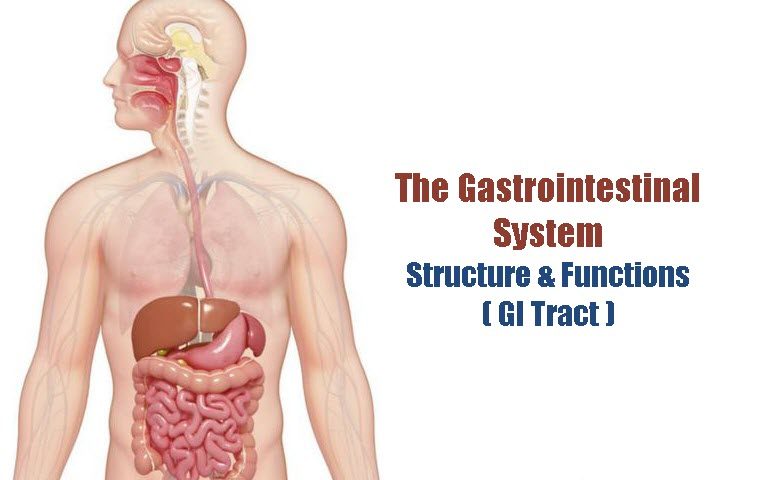Small Intestine
Most of the disgestion takes place in the small intestine only, which is approximately about 20 inches (6 meters) long. The chyme from the stomach enters into small intestine and passes through it with the help of peristaltic contractions.
The small intestine is divided into 3 major sections:
- The Deudenum
- The Jejunum
- The Ileum
The Deudenum
The deudenum is the first section of the small intestine which is a C-shaped curve approximately 25.4 cm long that extends from the stomach.
Food moves down from the stomach into deudenum through a narrow opening called “Pylorus”.
The deudenum also has an opening named “Sphincter of Oddi” through which Bile juice and Pancreatic juice enters into intestine to neutralize the acidic food or chyme and helps in further digestion.
The Jejunum
The jejunum is the second section and forms the longest portion of the small intestine that extends from deudenum.
The jejunum leads to the ileum, the narrowest portion of the small intestine.
The Ileum
In the ileum,
- Carbohydrates are broken down into monosaccharides and disaccharides
- Proteins are further degraded into amino acids and peptides
- Fats are emulsified and reduced to fatty acids and monoglycerides
- The nutrients along with water and electrolytes are re-absorbed from chyme through intestinal mucosa into the blood stream for use by the body
- Non-nutrients such as vegetable fibres are carried through the intestine for excretion
The small intestine ends at ileocecal valve, located in the lower right part of the abdomen.
The ileocecal valve serves as a sphincter which controls the flow of the digested material from the ileum into the large intestine and prevent its reflux into the small intestine.
Large Intestine
As the chyme passes through the small intestine, it enters into ascending colon of the cecum, the pouchlike begining of the large intestine.
By this time, the chyme mostly consists of indigestible material. After the ascending colon, the chyme passes through the transverse colon, and then the descending colon to the rectum and anal cavity where it is finally expelled.
The large intestine produces no hormones or no digestive enzymes, yet it is the place where large amount of reabsorption takes place.
Nearly all of the water that remained in the chyme is reabsorbed through large intestine along with sodium and chloride.
The large intestine contains the following good bacteria
- Escherichia Coli
- Enterobacter Aerogenes
- Clostridium Welchii
- Lactobacillus Bifidus
These bacteria helps in production of Vitamin K and even helps in break down of cellulose into usable carbohydrates.
In the lower part of the descending colon, long relatively sluggish contractions causes propulsive waves called mass movements.
These movements propel the intestinal contents into the rectum and produce the urge to defecate.



